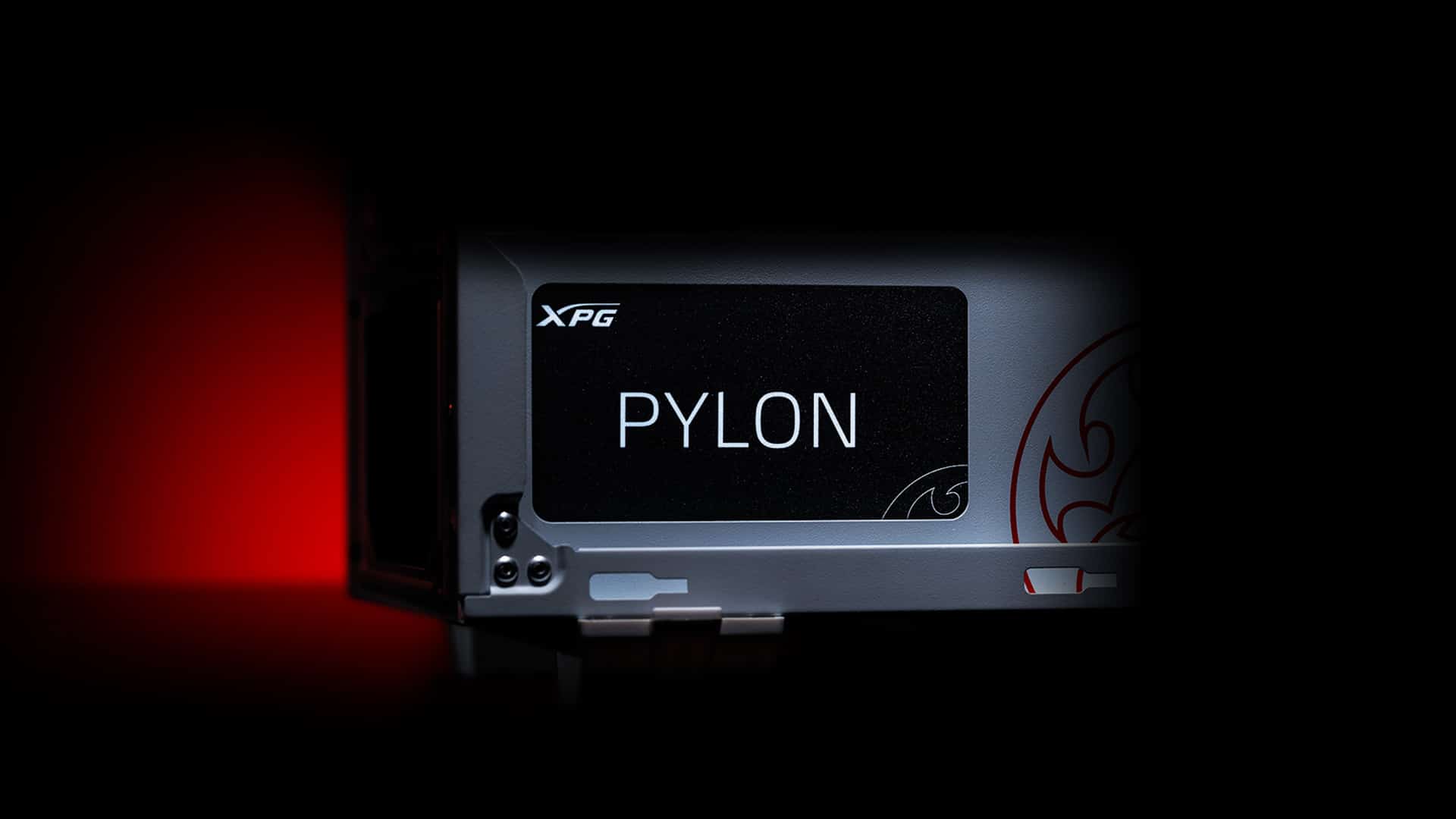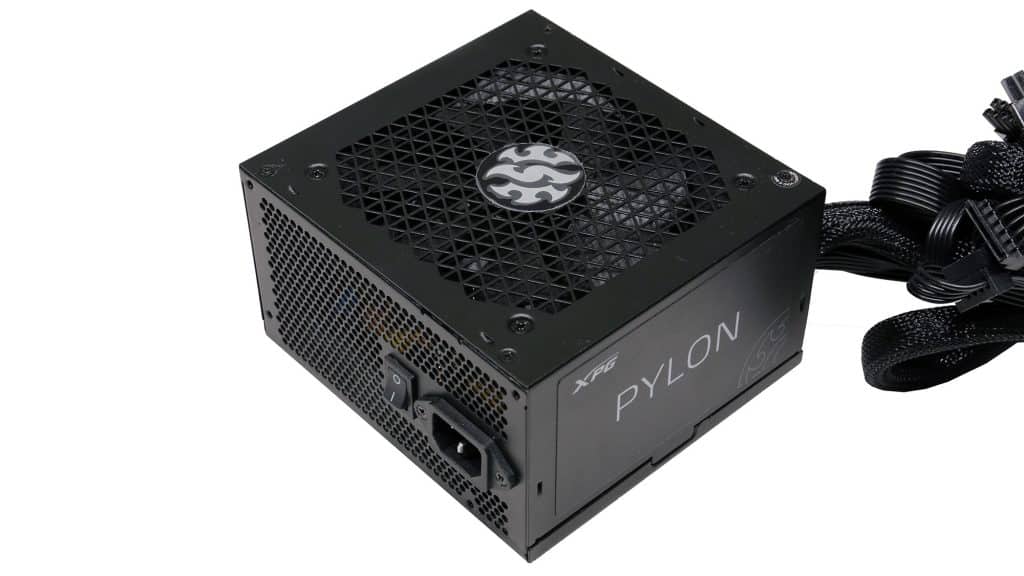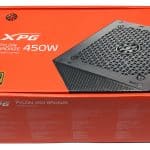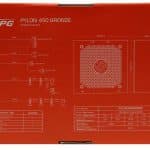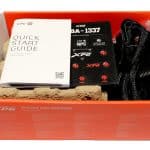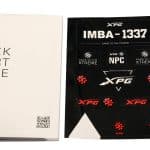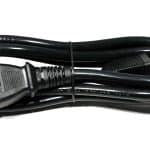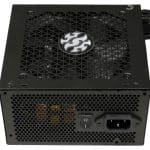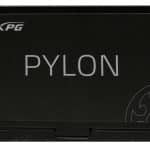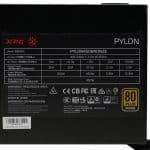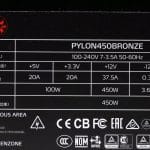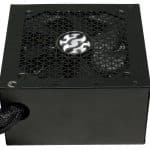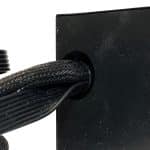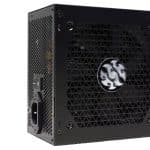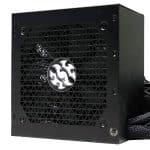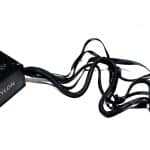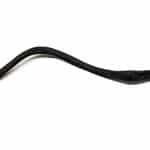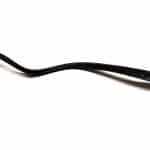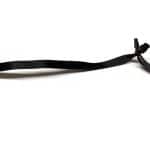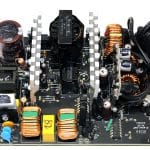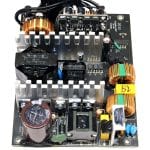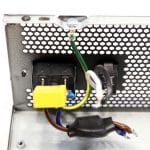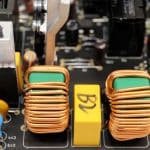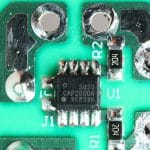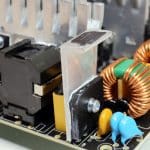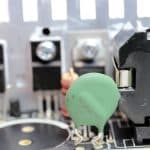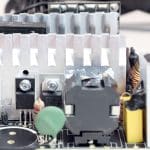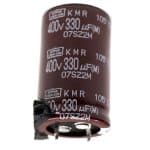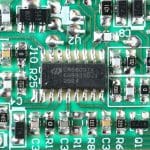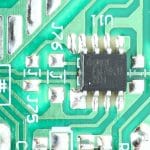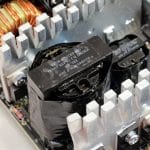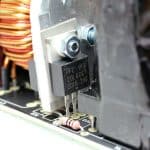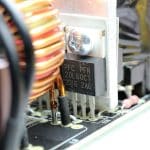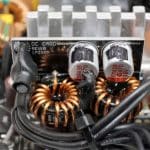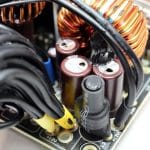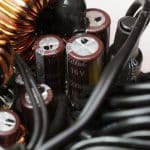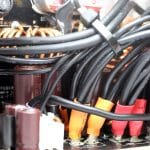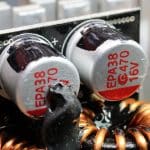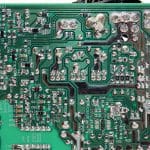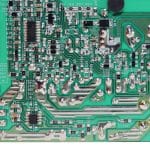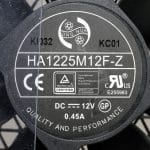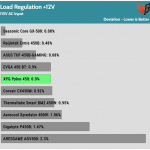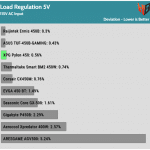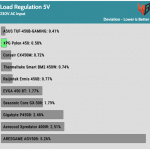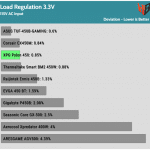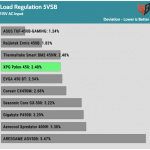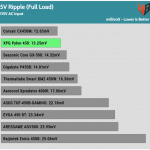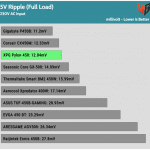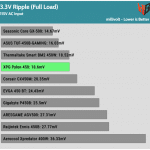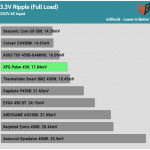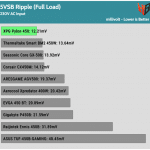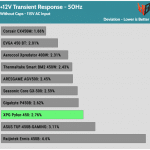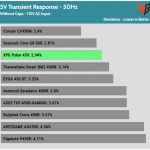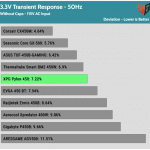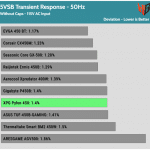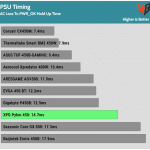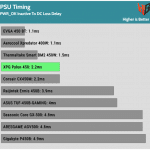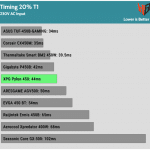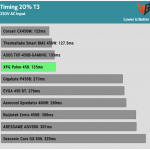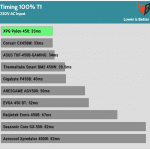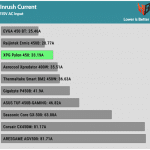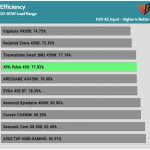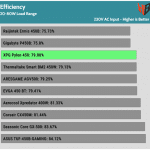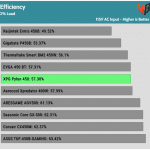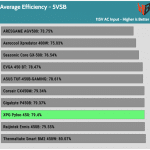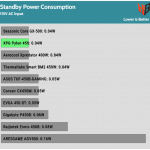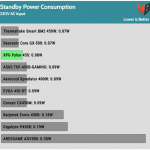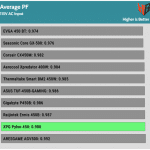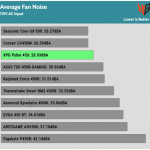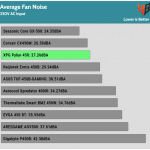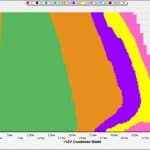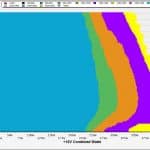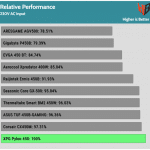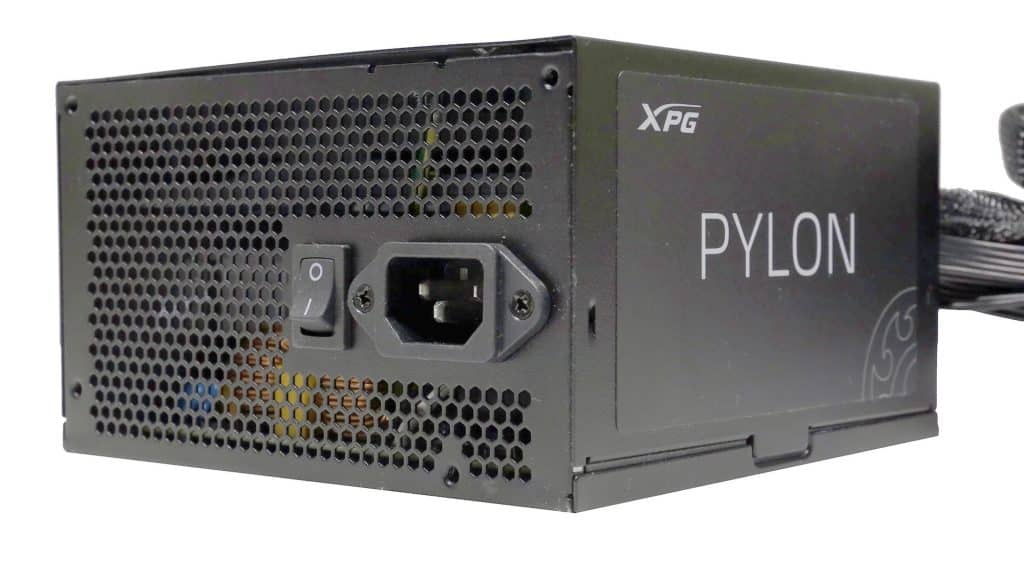Most users are in the search for a highly affordable and low capacity PSU and the XPG Pylon 450W looks to fit the bill. The DC-DC converters for the minor rails, the Japanese bulk cap and the FDB fan, are not easy to find in a 45-50 dollar PSU and this is why XPG supports this mainstream PSU, with a hefty five-year warranty.
I have reviewed mostly expensive PSUs with high Wattage output so far, so I thought to look at a mainstream product with only 450W maximum power output. The XPG Pylon 450 is a PSU destined for low-demanding systems like office PCs or PCs with a low-end GPU or an integrated, to the CPU. With only 450W, you should not expect a 12VHPWR connector, especially since the ATX v3.0 has this connector as optional and not mandatory. After all, with such low overall power output, you would be restricted to a 150W 12VHPWR connector, which is what a PCIe 6+2 connector can also deliver, so practically, there would be no point.
The Pylon units don’t use modular cables to suppress the production cost. This won’t be a significant issue for the lowest capacity member since it has a low amount of cables, so users will use most of them anyway. Modular cables are an excellent asset for higher-capacity PSUs. I prefer cutting corners to modular cables rather than dropping the quality of the parts used inside the PSU. Efficiency-wise, the unit is certified as Bronze by Cybenetics, and it also has a Cybenetics A- noise rating, meaning low enough average noise output. The unit’s low power helps keep noise output low, but the platform is not highly efficient, so the fan still has to spin fast enough to cope with the thermal loads.
- Manufacturer (OEM): Channel Well Technology
- Max Power: 450W
- Cybenetics Efficiency: [115V] Cybenetics Bronze (82-85%)
- 80 Plus Efficiency: Bronze
- Noise: Cybenetics A- (25 – 30 dBA)
- Compliance: ATX12V v2.53, EPS 2.92
- Alternative Low Power Mode support: Yes
- Power 12V: 450W
- Power 5V + 3.3v: 100W
- Power 5VSB: 12.5W
- Cooling: 120mm Fluid Dynamic Bearing Fan (HA1225M12F-Z)
- Semi-Passive Operation: No
- Modular Design: No
- High Power Connectors: 1x EPS, 2x PCIe 6+2 pin (single cable)
- Peripheral Connectors: 5x SATA (2x cables), 2x 4-pin Molex (2x cables)
- ATX/EPS Cable Length: 600/670mm
- Distance between SATA/4-pin Molex connectors: 150mm
- In-cable capacitors: No
- Dimensions (W x H x D): 150 mm x 85 mm x 140 mm
- Weight: 1.7 kg (3.75 lb)
- Warranty: 5 years
Box & Bundle
The first thing that came to mind once I saw the box was where the Cybenetics logo was! I am sorry, but I couldn’t help it. From the moment this is a Cybenetics-rated PSU, it should have the corresponding badges. Big shame to XPG for not using them!
Instead of foam XPG used a more environment-friendly material, which provides decent protection to the PSU. The bundle includes fixing bolts, the AC power cord, a quick start guide, and some stickers. There are no zip ties included, unfortunately.
Product Photos
Don’t expect to find a space design in an affordable PSU. The dimensions are compact, and a plastic grommet protects the cable exit hole. Finally, the non-flat cables are sleeved.
Cables
| Native Cables | |||||
| Description | Cable Count | Connector Count (Total) | Gauge | In Cable Caps | |
|---|---|---|---|---|---|
| ATX connector 20+4 pin (660mm) | 1 | 1 | 18-22AWG | No | |
| 4+4 pinEPS12V (670mm) | 1 | 1 | 18AWG | No | |
| 6+2 pin PCIe (560mm+150mm) | 1 | 2 | 18AWG | No | |
| SATA (560mm+150mm+150mm) / 4-pin Molex (+150mm) | 1 | 3 / 1 | 18AWG | No | |
| SATA (560mm+150mm) / 4-pin Molex (+150mm) / FDD (+150mm) | 1 | 2 / 1 / 1 | 18-20AWG | No | |
| Modular Cables | |||||
| AC Power Cord (1420mm) – C13 coupler | 1 | 1 | 18AWG | – | |
All cables are long enough, and the distance between all connectors is adequate, at 150mm. The only thing that I’m afraid I have to disagree with is the FDD connector. They could install a 4-pin Molex in its place and provide an adapter for users still needing a Berg connector.
Protection Features
| OCP (Cold @ 23°C) | 12V: 45A (120%), 12.055V 5V: 28.5A (142.5%), 4.963V 3.3V: 28.5A (142.5%), 3.257V 5VSB: 3.9A (156%), 5V |
| OCP (Hot @ 40°C) | 12V: 43A (114.66%), 12.066V 5V: 26.5A (132.5%), 4.971V 3.3V: 26.7A (133.5%), 3.257V 5VSB: 3.9A (156%), 4.996V |
| OPP (Cold @ 22°C) | 567.61W (126.14%) |
| OPP (Hot @ 39°C) | 558.11W (124.02%) |
| OTP | ✓ (123°C @ 12V Heatsink) |
| SCP | 12V to Earth: ✓ 5V to Earth: ✓ 3.3V to Earth: ✓ 5VSB to Earth: ✓ -12V to Earth: ✓ |
| PWR_OK | Accurate but lower than 16ms |
| NLO | ✓ |
| SIP | Surge: MOV Inrush: NTC Thermistor |
OCP at 12V and OPP are set correctly. The minor rails have high OCP triggering points, which is not the safest thing to do. There is no need for 3.3V going over 20A! Lastly, there is over temperature protection (OTP) which is not common in budget units, although it is among the most crucial protection features.
Part Analysis
| General Data | – |
| Manufacturer (OEM) | CWT |
| PCB Type | Single-Sided |
| Platform | CSB-A |
| Primary Side | – |
| Transient Filter | 4x Y caps, 2x X caps, 2x CM chokes, 1x MOV, 1x CAP200DG (Discharge IC) |
| Inrush Protection | NTC Thermistor SCK – 2R58 (2.5 Ohm) |
| Bridge Rectifier(s) |
1x GBU806 (600V, 8A @ 100°C)
|
| APFC MOSFETs |
2x Silan Microelectronics SVF18N50F (500V, 11A @ 100°C, Rds(on): 0.31Ohm)
|
| APFC Boost Diode |
1x STMicroelectronics STTH8S06 (600V, 8A @ 25°C)
|
| Bulk Cap(s) |
1x Nippon Chemi-Con (400V, 330uF, 2,000h @ 105°C, KMR)
|
| Main Switchers |
2x Silan Microelectronics SVF13N50F (500V, 8.2 @ 100°C, Rds(on): 0.52Ohm)
|
| PFC/PWM Combo Controller | Champion CM6800TX & Champion CM03X |
| Topology |
Primary side: APFC, Double Forward
Secondary side: Passive Rectification (12V) & DC-DC converters (5V & 3.3V) |
| Secondary Side | – |
| +12V SBRs | 4x PFC PFR20L60CT (60V, 20A) |
| 5V & 3.3V MOSFETs | 4x Sync Power SPN3006 (30V, 57A @ 100°C, Rds(on): 5.5mOhm) PWM Controller: ANPEC APW7159C |
| Filtering Capacitors | Electrolytic: 2x Elite (3-6,000h @ 105°C, EV), 7x Elite (2-5,000h @ 105°C, ED), 3x Elite (2-5,000h @ 105°C, EK), 3x Elite (4-10,000h @ 105°C, EY), 1x Elite (105°C, EG), 2x Elite (2,000h @ 105°C, PF) Polymer: 2x APAQ |
| Supervisor IC | INI1S429I – DCG |
| Fan Model | Hong Hua HA1225M12F-Z (120mm, 12V, 0.45A, Fluid Dynamic Bearing Fan) |
| 5VSB Circuit | – |
| Standby PWM Controller | Power Integrations TNY287PG |
Channel Well Technology (CWT) is the OEM of all XPG Pylon units. The platform’s code name is CSB-A, which uses an older design to keep production costs low. CWT used a double forward topology on the primary side, which is enough for Bronze efficiency levels. On the secondary side, the 12V rail is regulated by passive components, Schottky Barrier Rectifiers (SBRs), which have increased power losses compared to FETs. The only modern touch in this platform is the DC-DC converters generating the minor rails.
The small PCB is underpopulated since there is no need for large and many parts in a 450W PSU. The good thing is that we find proper heatsinks on both the primary and secondary sides. With a passive rectification scheme for 12V, the use of a heatsink was a one-way road. There are no heatsinks on the DC-DC converters board, so I would like to see lower OCP triggering points on these rails (5V and 3.3V).
XPG used a Japanese cap on the APFC converter for increased reliability and Elite caps on the secondary, which are the best affordable choice. The Hong Hua FDB fan is another good part that will increase the unit’s reliability. Typically you won’t find FDB fans in budget-oriented products. Finally, the soldering quality is decent.
Load Regulation
Load regulation is within 1% on all major rails. The native cables play a significant role since they have lower resistance.
Ripple Suppression
Ripple suppression is great, not only for the standards of the budget 450W category.
Transient Response
The double forward topology doesn’t allow a good transient response at 12V. The 3.3V rail also registers a high deviation.
Hold Up Time
The hold-up time is a hair away from 17ms, but the power ok signal’s hold-up time is notably away from 16ms. Still, this is a budget unit, and the bulk caps are expensive. Most affordable PSUs use smaller than required bulk caps.
Timings
The PSU supports Alternative Low Power Modes.
Inrush Current
Inrush current is low at 115V but pretty high at 230V.
Efficiency Normal, Light & Super-Light Loads
For a Bronze-rated PSU, efficiency is decent with normal loads. The platform is not so efficient with light loads; the same goes with a 2% load, where the PSU cannot meet the 60% requirement.
Average Efficiency 5VSB
The 5VSB rail is efficient.
Vampire Power
Vampire power is low.
Average Efficiency
The average efficiency is satisfactory. The difference with the CX450M, which uses the same platform, is notable, though.
Average PF
The APFC converter does a good job!
Average Noise
The Pylon 450 has a low average noise output compared to similar spec units. The CX450M achieves slightly better results.
Fan Noise & Speed Maps @ 28-32 °C
With up to 250W, the PSUs noise is low, below 25 dBA. The 30 dBA mark is passed with more than 275W, and with 325W, the fan makes its presence felt with more than 35 dBA.
Overall Performance
The XPG Pylon takes the lead from all 450W and 500W Bronze units and is dead close to the Gold-rated Seasonic GX-500. Strangely enough, the GX500 doesn’t perform so well with 230V input, so the Pylon 450 achieves first place easily.
Epilogue
The XPG Pylon 450 is a fine, low-capacity PSU for a non-demanding system, including office PCs. Not all users need strong PSUs or have the budget to build super PCs, so there is a large market share for budget PSUs. Ideally, you should invest in a Gold-rated, at least, power supply, but usually, these don’t come cheap, so the next thing that comes to mind is a Bronze unit since Silver ones are rare. Now I think of it, the least popular efficiency rating is Silver, with Gold and Bronze ratings being the most popular.
The Pylon 450 is among the few budget PSUs with such high quality, equipped with decent capacitors and an FDB fan. This is why XPG didn’t have a problem increasing its warranty for this product from three years to five. This shows that RMA rates are low, else XPG wouldn’t do that. Double forward topology, which this PSU uses, doesn’t allow for a good transient response at 12V, but budget systems, which will be this PSU’s playground, won’t apply high transient loads. Typically, high transient loads derive from power-hungry GPUs, with CPUs following.
The primary opponent for the Pylon 450W is the Corsair CM450M which uses the same CWT platform. The Pylon takes the lead in overall performance, while the CM450M is slightly quieter. I suggest you get the one you find at a better price since you won’t notice any difference in either performance or noise output.
Buy XPG Pylon 450W Buy Corsair CX450M
Buy ASUS TUF GAMING 450W Buy Cooler Master MWE White 450W
Buy Thermaltake Toughpower GX2 600W
- Full power at 40°C
- High enough overall performance
- Good build quality
- Properly set OCP at 12V and OPP
- Quiet operation
- Tight enough load regulation
- Good ripple suppression
- Almost 17ms hold-up time (16.9ms)
- Low inrush current with 115V
- High-performance APFC converter
- Efficient 5VSB rail
- Alternative Low Power Modes (ALPM) support
- Low vampire power
- FDB fan
- Adequate distance between all connectors
- 5-year warranty
- High OCP on the minor rails
- Not good transient response
- Low efficiency with light loads
- No modular cables
- High inrush with 230V
- Lower than 16ms power ok signal hold-up time
